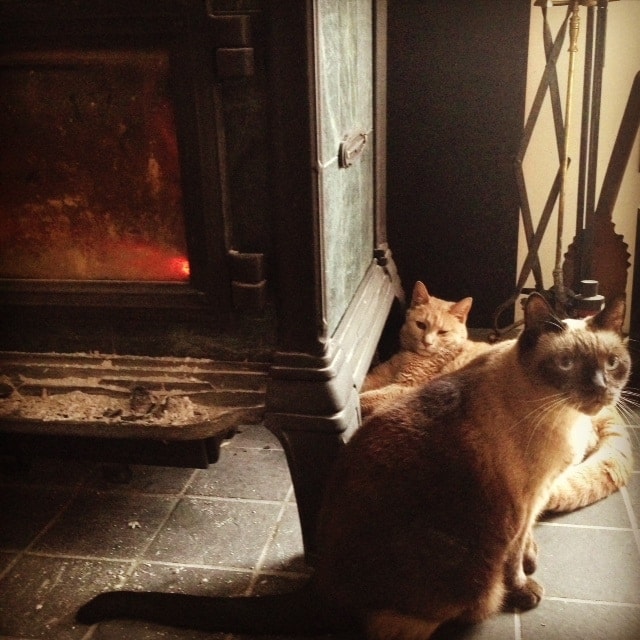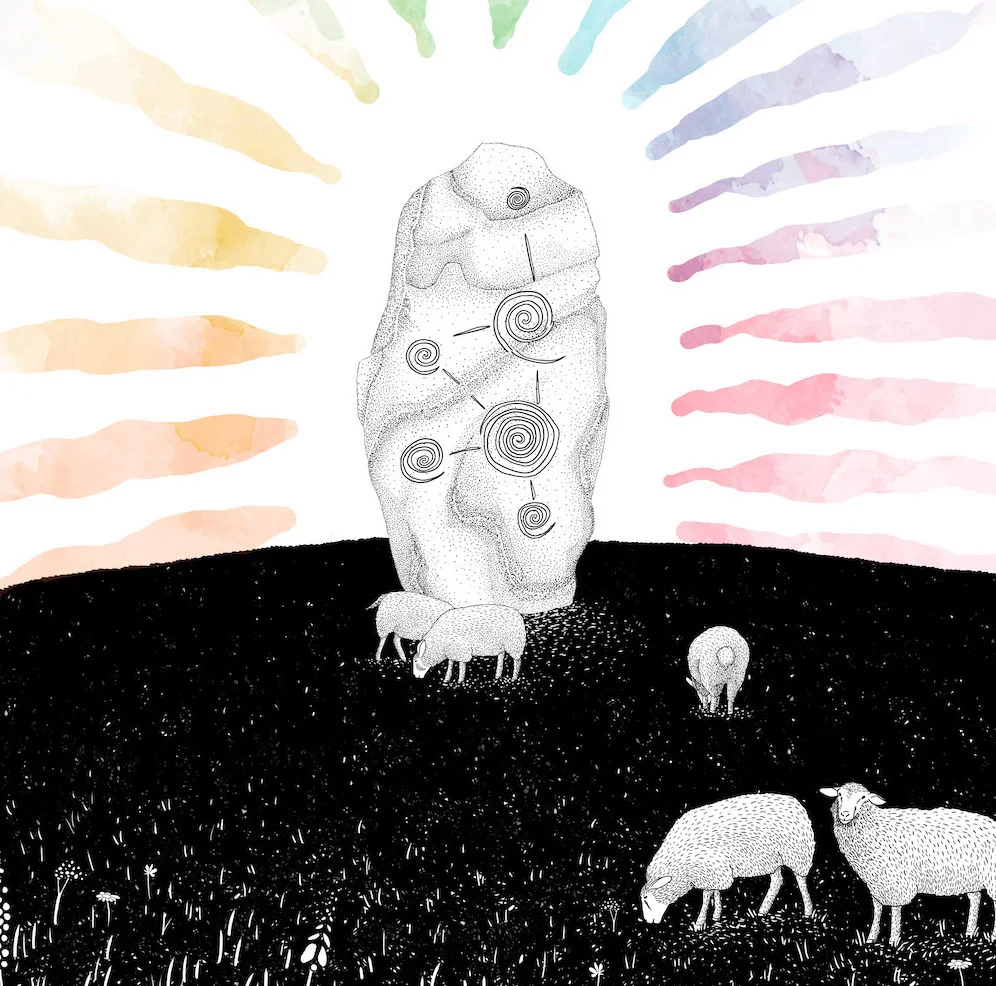Tending the Embers: Chaga + The Creative Spark

In winter we stir the embers. A motion of both caretaking and stoking, a gentle coaxing and potent remembering of that which lights our fire. Every winter, as color fades from the outer world, we are invited to journey into the vibrant tableau of our deepest self. To rekindle our inner colors with a gentle dedication to feeding our own sources of warmth. This wintertime enliven your inner embers by simply nourishing yourself, deeply and daily. Take a long bath. Sip good broth. Wrap yourself in quilts and go to bed early. Tend your inner hearth by feeding yourself fuel that burns clean and easy. Good food, warm slippers, laughter. With a bed of good embers, even the soggiest logs can catch fire. In winter we realize that self-care is an act of preparation, a gentle gestation for transformation itself. To tend our embers is to lay the groundwork for bringing new flames to life. Even the smallest acts of self nourishment are like breath on the coals, bringing our inner hearths to active possibility once more. Any good fire begins with a well-tended coal. In order to realize our wildest dreams we must be expert caretakers of these innermost fires. This winter, embrace this lush opportunity to nourish the embers, and by doing so create a warm bed in which any vision can catch fire.

Sometimes the easiest way to restart your fire is to reintroduce a creative spark. The cold months are deeply generous with the space given to creation. Traditionally, winter was a time for luxuriously slow and meditative tasks. Winding wool and knitting scarves. Carving spoons, dipping candles and hand penning letters. Winter was devoted to the kind of tinkering and creative rekindling that can only happen when ones sole employ is to keep the fire going and stay cozily indoors. This winter, allow yourself the gift of rediscovering an art, or idea, or creative pursuit that brings your own spark alive. What was it that excited you as a child? Poetry or painting? Studying sea creatures or playing make-believe? As the cold months clear the landscape of leaves, give yourself the imaginative space to rekindle your creative spark. Engage in the sheer joy of moving by the unhurried torch of curiosity and experimental living. Use your creativity like a flint box, bravely striking into new creative pursuits to light something anew. With a slow burning curiosity and a house cat’s dedication to comfort, let yourself absorb gradually, learn in-between hearty mouthfuls of hot soup and a long nights sleep. Accept the natural pardon given by a world gone cold to withdraw from the quickness of doing and rest by the warm woodstove of your innermost interests, those things that make you sigh and bring you alive.
There is an alchemical altar inside all of us that aches to be fed. In winter, we are invited to pay homage to the sanctity of self-nourishment and our individual creative sparks, to become devotees of our innermost glow. Winter is an invitation to rediscover our light, for when we give our inner selves the care and attention we need, that ever present altar can burn bright enough to throw light into even the darkest corners of our wintertime world.

>> Chaga (Inonotus obliquus) <<
** Please note: Chaga is currently listed as an at-risk fungus and is being overharvested in many areas of the world. Please practice ethical wildcrafting and do your research when purchasing from outside sources. And remember, a little goes a long way**
A living embodiment of both the darkness and spark of wintertime, Chaga is a rich and mystical cold weather medicine. In natural hue, this medicinal fungus looks like a hearty slab of rough volcanic stone or a wet hewn chunk of wood. In our area, Chaga flourishes on Yellow Birches (Betula alleghaniensis) but in other northern corners of the world it can be found on White Birch (Betula papyrifera) and Gray Birch (Betula populifolia) as well.
Dense and woody, Chaga needs to be decocted to receive its full medicine, and so is best drunk in the long months of winter when the windows are happy to be fogged by the warm breath of the stove. Chaga is a rich addition to your daily routine of self-nourishment. In the winter I like to keep Chaga in a pot on the woodstove for days, or sometimes weeks, at a time. On first simmer, Chaga will turn your tea dark cacao colored, but you can use the same chunk in your decoction until the brew turns a light caramel.
Medicinally, Chaga is a deeply nourishing immune tonic. Antiviral, immune modulating, and adaptogenic, Chaga has been an indispensible wintertime decoction in the far northern climes of Russia for centuries. I often like to add Chaga to a wintertime adaptogenic tea with Reishi (Ganoderma tsugae, G. lucidum), Eleuthro (Eleutherococcus senticosus) and good handfuls of cardamom and cinnamon for taste. I sip a cup of the tea every morning and the fortifying nourishment of it seems to spread throughout every limb. Chaga tea is also rich in antioxidants and most excellently paired with bitter dark chocolate. Traditionally used in Russia for cancer, Chaga has been shown to have an antitumor effect in contemporary clinical trials.

Often referred to as a mushroom, Chaga is actually an outgrowth of the mycelium of the fungus itself (mushrooms being the “fruiting body” of the mycelium). Mycelium, or the vegetative aspect of fungi, extends underneath the soil of our entire world. Indispensable and vast, mycelium is the unseen web upon which the entire living world is woven. Over time, this magical root-based system works to break down massive amounts of organic material, turning winters leaves into the fertile humus of a forest floor. Mycelium is so adept at breaking down organic compounds that many think these organisms might be the first to adapt to the new chemicals of our world, transmuting radiation and pollutants into something more benign. Mycelium is an undertaker of sorts, turning the opportunity of death into the rich possibility of rebirth. Mycelium also functions as a vast network of organic interconnection. Some scientists believe that trees and other plants are able, not only to communicate, but also send vital nutrients to each other through the infinite strings of this mysterious web. With each sip, Chaga invites us to step into the nourishing weave of interconnection, helping the entire complex system of our being to receive sustenance and opening up new threads of communication between all layers of our self.
Also called tinder fungus, Chaga is as an excellent ally for catching coals of fresh-drilled hand-fires and holding the spark for a miraculous amount of time. Used as tinder for eons, it was even found in the pouches of Otzi, the Copper age man who lived and died in the Alps around 3,300 BCE and was discovered in an ice flow 5,000 years later. A vital companion for sojourners who need to bring the spark of new life with them wherever they go, Chaga is an embodiment of tending our inner embers. This rich medicine reminds us that even in the bleak of winter we can strike new and nourishing sparks to flame, and that it all begins with the slowness of putting a pot of tea to boil.

Chaga Maple Hot Cocoa
Recipe makes two mugs of hot cocoa
½ oz Chaga
1.5 cups water
2 tsp cocoa power
¼ – ½ tsp cinnamon (or to taste)
2 oz coconut milk
2 oz maple syrup
(Optional) Vanilla Extract
- Decoct Chaga. Combine Chaga with water and bring to a boil. Reduce heat to a simmer. Cover and let churn for at least 20 minutes (or until your tea turns to the shade of dark wood). When your decoction is done, strain the tea into a separate container.
- Sir in cocoa + cinnamon powder until all lumps are dissolved
- Add Coconut milk and Maple syrup
- Garnish with a cinnamon stick and make a toast to mycelium!
Interested in up-leveling this recipe with stone medicine? Check out this post for to learn how Chaga + Hematite like to work together.
// post originally published in Plant Healer Magazine, Winter 2016 //



Beautiful article about our beloved Chaga I Thanks a million!
I have never heard of this. It sounds wonderful but I guess it does not grow in Australia.
Your writing is so beautiful Asia! Thank you for sharing it with us! I am replenished just by sipping at your wording and lovely poetic imagery. Stay warm and creative always.
Thank you for your warm words Myra! They are as good as a chaga ember on this winter day. Sending much appreciation + care! <3
What beautiful words dear Asia! Just what I needed to read and remember this morning. I love the image of chaga as a sojourner’s companion, as well as winter nourisher. Do you have a specific place you like to get your chaga from? Love xo
Thank you dear heart. Your words are always such nourishment for my heart. I’ve been blessed to have friends in the north lands who normally supply me with chaga but I know that Mountain Rose herbs normally carries a bit. <3 Embered love to you dear one
I was just meditating on the medicine of embers. Beautiful post.
Thank you for reading Asali. A blessed + bright new year to you!